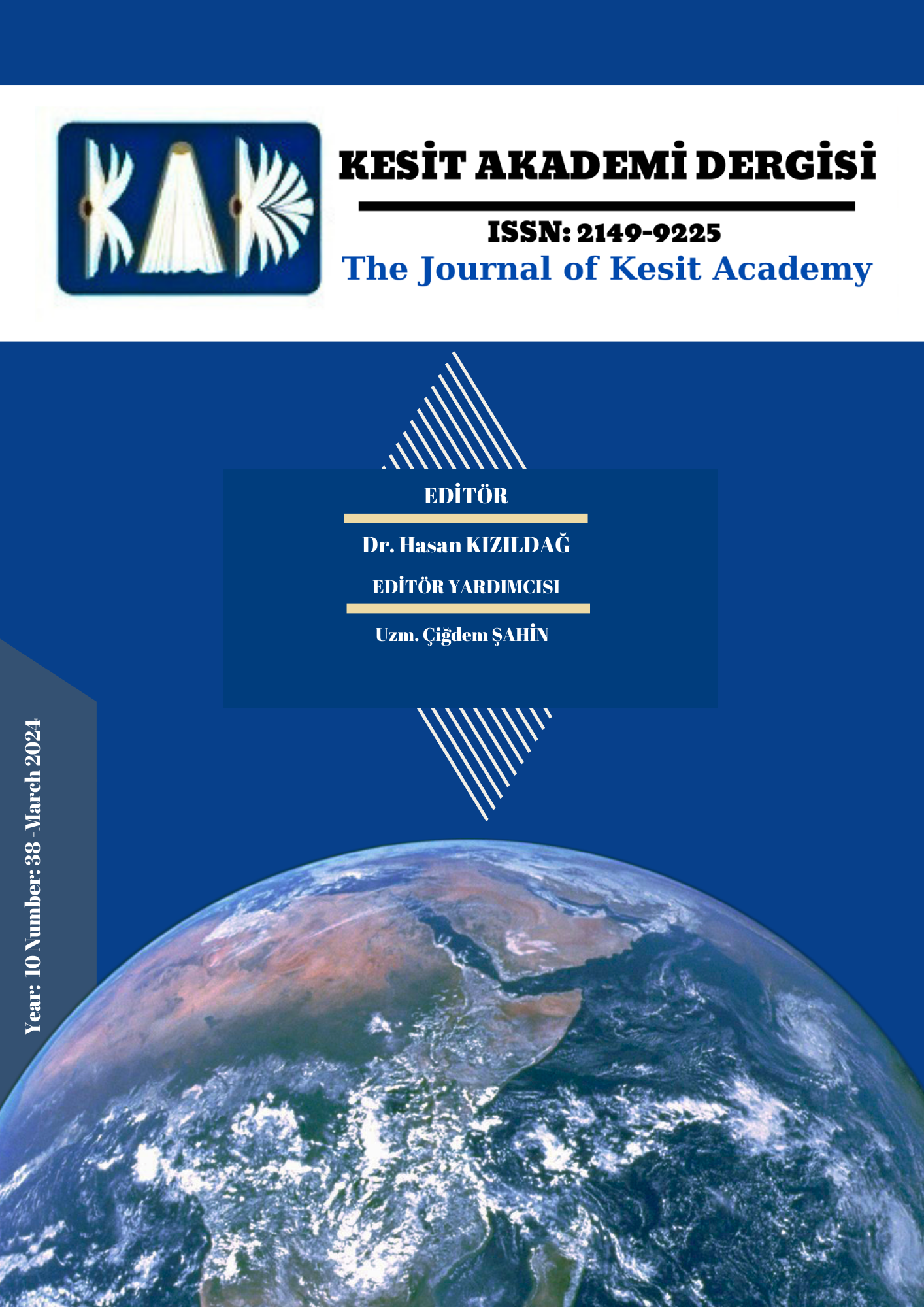Türk ve İslam Eserleri Müzesi’nde Sergilenen Seccadelerde Kandil Motifinin İkonografik Değerlendirmesi
Author :
Abstract
Türk ve İslam Eserleri Müzesi’nde sergilenen Türklere ait en erken tarihli seccade örnekleri 15.yüzyıl Osmanlı Dönemine ait seccadelerdir. 15. yüzyıl Osmanlı Dönemine ait seccadelerin kompozisyonu kûfi yazı ve geometrik formla tasarlanmış olmaları 15. yüzyılda Selçuklu sanat geleneğinin halen devamı ettiğini gösteren önemli örneklerdir. Ayrıca seccadelerin bazılarında, dinsel kavramları simgeleyen kandil motifinin de kullanıldığı görülür. Aydınlatıcı anlamında kullanılan kandil motifi, dinî bir motif olarak Müslümanlar tarafından, cami mihraplarında, mihraplı seccadelerde, bazı tekstillerde, mezar taşlarında, realist üslûplarda veya stilize edilerek çokça kullanılmıştır. Türk ve İslam Eserleri Müzesi’nde sergilenen, 15 ile 18. yüzyıl arasında üretilmiş seccade ve saf seccade örnekleri üzerinden yapılan araştırmalarda, kandil motifinin kullanıldığı görülmüştür. Ancak, kandil motifi yüz yıl bazında seccadeler üzerindeki desen ve kompozisyon özellikleri incelendiğinde ise farklı form ve düzenlemelerde kullanıldığı tespit edilmiştir. Bu bağlamda, Türk ve İslam Eserleri Müzesi’nde korunan seccadeler üzerinden yapılan araştırmada, seccadelerin renk, malzeme, teknikleriyle birlikte, özellikle kandil motifinin ikonografik değerlendirmesi amaçlanmıştır. Çalışma, müzede sergilenen seccadelerin 15. ve 18. yüzyıllar arasına tarihlenen örnekler üzerinde yapılan incelemelerle, özellikle kandil motifinin gerçek anlamından sembolik bir motife dönüşüm sürecini görsel verilerle destekleyerek sunacaktır. Bu sanat değeri yüksek seccadeler, desen ve kompozisyon özelliklerindeki değişimler aracılığıyla dönemin sosyal ve siyasi normlarını yansıttığı için önemli eserlerdir. Bu çalışma, gelecekte bu alanda araştırma yapacak kişiler için önemli bir kaynak oluşturmayı amaçlamaktadır.
Keywords
Abstract
The earliest example of a Turkish prayer rug is the 15th-century Ottoman prayer rug exhibited in the Turkish and Islamic Arts Museum. The composition of the prayer rugs, designed with Kufic script (calligraphy) and geometric forms, are important examples showing that the Seljuk art tradition was still continuing in the 15th century. It is also seen that the kandil motif, which symbolizes religious concepts, is used on some of the prayer rugs. The Kandil motif, which is used in the sense of illuminating, has been widely used by Muslims as a religious motif, on mosque altars, prayer rugs with altars, some textiles, tombstones, in realistic styles or stylized. In research conducted on prayer rugs and pure prayer rugs produced between the 15th and 18th centuries, exhibited in the Museum of Turkish and Islamic Arts, it was seen that the kandil motif was used. However, when the pattern and composition features of the kandil motif on the prayer rugs were examined over the centuries, it was determined that it was used in different forms and arrangements. In this context, it is aimed to make an iconographic evaluation of the kandil motif along with the composition features and color, material and pattern features of the prayer rug samples, which are preserved and exhibited in the Turkish and Islamic Arts Museum, which has an important place in Turkish Textile History. Thus, it is aimed to examine the process of transformation of the kandil motif from its real meaning into a symbolic motif on a century-by-century basis. These prayer rugs, which have high artistic value, are among the very important works because the changes seen in both their pattern and composition features reflect the social and political norms of the period, and they are intended to be an important resource for those who do research in this field after us.





